I am working on optimizing my Mandelbrot renderer in pyOpenCL and want to split the iterations in chunks so i can better utilize my GPU.
Example with max iterations=1000 and 2 "chunks":
1. Run the mandelbrot escape algorithm for iterations 0-500.
2. Save the needed iterations for every point where iterations < 500 and run again for all other points with iterations from 500 - 1000.
The first loop works like expected but every chunk after that leads to wrong results. I'd really like to be more specific but i don't know where the real problem lies (starring at the code for > 2 days now).
I suspect something going wrong when copying the old x,y (real, imaginary) parts from the kernel, but i am out of ideas how to debug it.
I get the same results running on my GPU and CPU so i'd guess its nothing GPU specific.
Example image with iterations=2000 and 10 chunks:

this is almost only the first chunk (plus some few "wrong" pixel).
All done in one chunk (iterations=200 and 1 chunk):

And the expected result with iterations=2000 and chunks = 1:

import pyopencl as cl
import numpy as np
from PIL import Image
from decimal import Decimal
def mandel(ctx, x, y, zoom, max_iter=1000, iter_steps=1, width=500, height=500, use_double=False):
mf = cl.mem_flags
cl_queue = cl.CommandQueue(ctx)
# build program
code = """
#if real_t == double
#pragma OPENCL EXTENSION cl_khr_fp64 : enable
#endif
kernel void mandel(
__global real_t *coords,
__global uint *output,
__global real_t *output_coord,
const uint max_iter,
const uint start_iter
){
uint id = get_global_id(0);
real_t2 my_coords = vload2(id, coords);
real_t x = my_coords.x;
real_t y = my_coords.y;
uint iter = 0;
for(iter=start_iter; iter<max_iter; ++iter){
if(x*x + y*y > 4.0f){
break;
}
real_t xtemp = x*x - y*y + my_coords.x;
y = 2*x*y + my_coords.y;
x = xtemp;
}
// copy the current x,y pair back
real_t2 val = (real_t2){x, y};
vstore2(val, id, output_coord);
output[id] = iter;
}
"""
_cltype, _nptype = ("double",np.float64) if use_double else ("float", np.float32)
prg = cl.Program(ctx, code).build("-cl-opt-disable -D real_t=%s -D real_t2=%s2" % (_cltype, _cltype))
# Calculate the "viewport".
x0 = x - ((Decimal(3) * zoom)/Decimal(2.))
y0 = y - ((Decimal(2) * zoom)/Decimal(2.))
x1 = x + ((Decimal(3) * zoom)/Decimal(2.))
y1 = y + ((Decimal(2) * zoom)/Decimal(2.))
# Create index map in x,y pairs
xx = np.arange(0, width, 1, dtype=np.uint32)
yy = np.arange(0, height, 1, dtype=np.uint32)
index_map = np.dstack(np.meshgrid(xx, yy))
# and local "coordinates" (real, imaginary parts)
coord_map = np.ndarray(index_map.shape, dtype=_nptype)
coord_map[:] = index_map
coord_map[:] *= (_nptype((x1-x0)/Decimal(width)), _nptype((y1-y0)/Decimal(height)))
coord_map[:] += (_nptype(x0), _nptype(y0))
coord_map = coord_map.flatten()
index_map = index_map.flatten().astype(dtype=np.uint32)
# Create input and output buffer
buffer_in_cl = cl.Buffer(ctx, mf.READ_ONLY, size=coord_map.nbytes)
buffer_out = np.zeros(width*height, dtype=np.uint32) # This will contain the iteration values of that run
buffer_out_cl = cl.Buffer(ctx, mf.WRITE_ONLY, size=buffer_out.nbytes)
buffer_out_coords = np.zeros(width*height*2, dtype=_nptype) # This the last x,y values
buffer_out_coords_cl = cl.Buffer(ctx, mf.WRITE_ONLY, size=buffer_out_coords.nbytes)
# 2D Buffer to collect the iterations needed per pixel
#iter_map = np.zeros(width*height, dtype=np.uint32).reshape((width, height)) #.reshape((height, width))
iter_map = np.zeros(width*height, dtype=np.uint32).reshape((height, width))
start_max_iter = 0
to_do = coord_map.size / 2
steps_size = int(max_iter / float(iter_steps))
while to_do > 0 and start_max_iter < max_iter:
end_max_iter = min(max_iter, start_max_iter + steps_size )
print "Iterations from iteration %i to %i for %i numbers" % (start_max_iter, end_max_iter, to_do)
# copy x/y pairs to device
cl.enqueue_copy(cl_queue, buffer_in_cl, coord_map[:to_do*2]).wait()
# and finally call the ocl function
prg.mandel(cl_queue, (to_do,), None,
buffer_in_cl,
buffer_out_cl,
buffer_out_coords_cl,
np.uint32(end_max_iter),
np.uint32(start_max_iter)
).wait()
# Copy the output back
cl.enqueue_copy(cl_queue, buffer_out_coords, buffer_out_coords_cl).wait()
cl.enqueue_copy(cl_queue, buffer_out, buffer_out_cl).wait()
# Get indices of "found" escapes
done = np.where(buffer_out[:to_do]<end_max_iter)[0]
# and write the iterations to the coresponding cell
index_reshaped = index_map[:to_do*2].reshape((to_do, 2))
tmp = index_reshaped[done]
iter_map[tmp[:,1], tmp[:,0]] = buffer_out[done]
#iter_map[tmp[:,0], tmp[:,1]] = buffer_out[done]
# Get the indices of non escapes
undone = np.where(buffer_out[:to_do]==end_max_iter)[0]
# and write them back to our "job" maps for the next loop
tmp = buffer_out_coords[:to_do*2].reshape((to_do, 2))
coord_map[:undone.size*2] = tmp[undone].flatten()
index_map[:undone.size*2] = index_reshaped[undone].flatten()
to_do = undone.size
start_max_iter = end_max_iter
print "%i done. %i unknown" % (done.size, undone.size)
# simple coloring by modulo 255 on the iter_map
return (iter_map % 255).astype(np.uint8).reshape((height, width))
if __name__ == '__main__':
ctx = cl.create_some_context(interactive=True)
img = mandel(ctx,
x=Decimal("-0.7546546453361122021732941811"),
y=Decimal("0.05020518634419688663435986387"),
zoom=Decimal("0.0002046859427855630601247281079"),
max_iter=2000,
iter_steps=1,
width=500,
height=400,
use_double=False
)
Image.fromarray(img).show()
edit: Here is another version where the real/imaginary parts never leave the GPU memory.
The results are the same.
I am completely out of ideas.